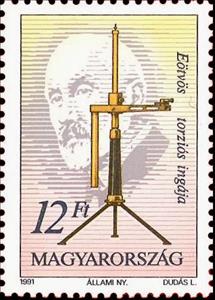Stamp: Lóránd Eötvös (Hungary 1991)
Lóránd Eötvös (Hungary 1991)
31 January (Hungary ) within release People goes into circulation Stamp Lóránd Eötvös face value 12 Hungarian forint
| Stamp Lóránd Eötvös in catalogues | |
|---|---|
| Michel: | Mi:HU 4124A |
| Stamp Number: | Sn:HU 3277 |
| Yvert et Tellier: | Yt:HU 3306 |
Stamp is square format.
Also in the issue People:
- Stamp - Lóránd Eötvös face value 12;
- Stamp - Lóránd Eötvös face value 12;
|
Data entry completed
53%
|
|
|---|---|
| Stamp Lóránd Eötvös in digits | |
| Country: | Hungary |
| Date: | 1991-01-31 |
| Perforation: | 11 |
| Emission: | Commemorative |
| Format: | Stamp |
| Face Value: | 12 Hungarian forint |
| Print run: | 1701300 |
Stamp Lóránd Eötvös it reflects the thematic directions:
Science is a systematic discipline that builds and organises knowledge in the form of testable hypotheses and predictions about the universe.Modern science is typically divided into two or three major branches: the natural sciences (e.g., physics, chemistry, and biology), which study the physical world; and the behavioural sciences (e.g., economics, psychology, and sociology), which study individuals and societies.The formal sciences (e.g., logic, mathematics, and theoretical computer science), which study formal systems governed by axioms and rules, are sometimes described as being sciences as well; however, they are often regarded as a separate field because they rely on deductive reasoning instead of the scientific method or empirical evidence as their main methodology. Applied sciences are disciplines that use scientific knowledge for practical purposes, such as engineering and medicine
An invention is a unique or novel device, method, composition, idea, or process. An invention may be an improvement upon a machine, product, or process for increasing efficiency or lowering cost. It may also be an entirely new concept. If an idea is unique enough either as a stand-alone invention or as a significant improvement over the work of others, it can be patented. A patent, if granted, gives the inventor a proprietary interest in the patent over a specific period of time, which can be licensed for financial gain.

